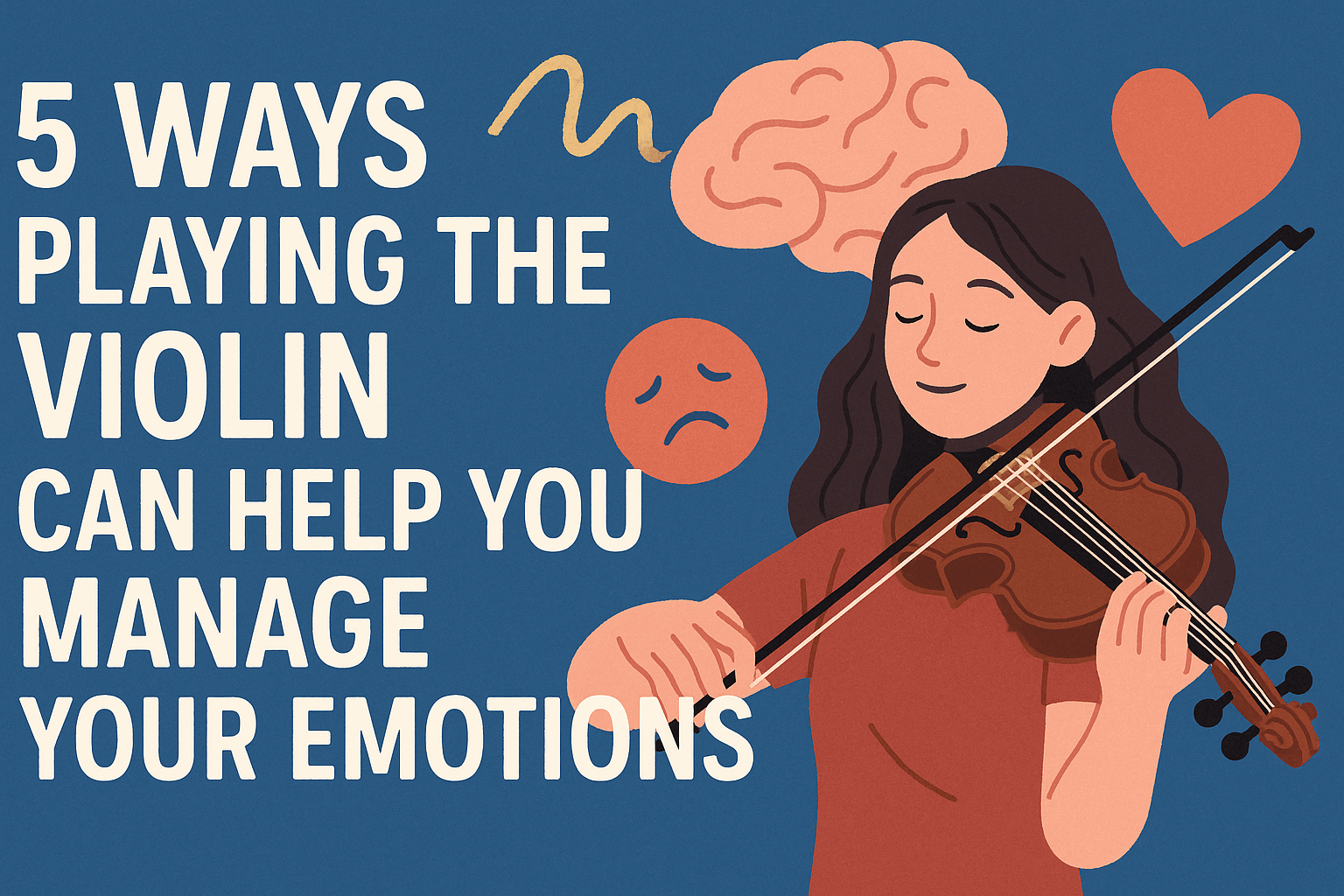The violin, with its soulful strings and expressive range, is more than an instrument—it’s a powerful tool for navigating the complexities of your emotional world. Its haunting melodies and vibrant energy can help you process feelings, find calm, and express what words often fail to capture. Whether you’re a seasoned violinist or just starting out, here are five ways playing the violin can become your emotional ally, complete with practical tips to deepen your practice and emotional connection.
1. Channeling Emotions Through Expressive Melodies
The violin’s unique ability to mimic the human voice makes it an ideal outlet for emotional expression. Its strings can wail with sorrow, soar with joy, or whisper with longing, allowing you to externalize complex feelings. When anger bubbles up, a fiery piece like Sarasate’s Zigeunerweisen can release that intensity. When sadness weighs heavy, a slow rendition of Bach’s Air on the G String can provide solace. This act of translating emotions into sound is deeply cathartic, helping you process and release pent-up energy in a healthy way.
Tip: Curate a playlist of pieces that resonate with different emotions—Vivaldi’s Spring for optimism, Barber’s Adagio for Strings for introspection, or even a lively folk tune for excitement. Practice these regularly to build an emotional toolbox, and don’t shy away from improvising to let your feelings guide the notes.
2. Finding Calm with Focused Practice
Playing the violin requires intense concentration, drawing you into the present moment and quieting mental chatter. This mindfulness can be a lifeline during moments of anxiety or stress. The repetitive motions of bowing, the tactile feedback of your fingers on the strings, and the rhythm of your breath create a meditative flow. Studies suggest that music practice can lower cortisol levels, reinforcing its calming effect. By focusing on a single phrase or scale, you anchor yourself, letting worries slip away. For additional musical mindfulness, you might explore music-based games to complement your practice—check out our 7 Best Music-Based Games for Android for fun ways to stay engaged with rhythm and melody.
Tip: Dedicate 10–15 minutes daily to slow, deliberate practice, such as playing scales or a simple etude. Sync your breathing with your bowing—inhale on upstrokes, exhale on downstrokes—to deepen the meditative effect. Create a quiet, distraction-free space to enhance this calming ritual.
3. Using Your Violin Case as a Safe Space
Your violin case is more than a protective shell; it can be a personal sanctuary for emotional reflection. Its familiar weight and texture can ground you, serving as a physical reminder of your musical journey. Take a look at this collection for reliable, sound cases. Before playing, take a moment to touch the case, perhaps tracing its edges or admiring any personal touches like stickers or engravings. Use the act of opening it as a ritual to enter an emotional space, and closing it to seal away stress. This small act can signal a transition, helping you shift from chaos to calm.
Tip: Personalize your case with affirmations or small mementos, like a note with an inspiring quote (“Music is the voice of the soul”). Keep a pocket-sized journal inside to jot down your emotions before and after playing, tracking how your practice shifts your mood over time.
4. Building Confidence Through Mastery
Mastering a new piece or technique on the violin is a powerful confidence booster, countering feelings of self-doubt or insecurity. Each small achievement—perfecting a tricky passage, improving your intonation, or nailing a vibrato—reinforces your resilience. This sense of accomplishment can lift your mood and provide a positive outlet for emotional energy. The discipline of practice also fosters patience, teaching you to approach emotional challenges with a similar steady mindset.
Tip: Break complex pieces into manageable sections and set weekly goals, like mastering one measure at a time. Record your practice sessions with your phone to track progress, and celebrate milestones by treating yourself to a small reward, like a favorite snack or a new rosin.
5. Connecting with Others Through Music
The violin’s emotive power can forge deep connections with others, alleviating feelings of loneliness. Playing in a duet, ensemble, or even for a loved one creates a shared emotional language. Music transcends words, allowing you to express vulnerability and feel understood. Community music groups also foster a sense of belonging, providing social support that can buoy your emotional health. Even sharing a simple melody with a friend can spark joy and closeness.
Tip: Seek out local music groups or online communities to play with others, even virtually. Arrange to perform a short piece for a family member or friend, perhaps a heartfelt rendition of a favorite song. If you’re shy, start by sharing a recording to build confidence.
Final Note
The violin is a gateway to emotional freedom, blending creativity with self-discovery. From channeling raw feelings through melodies to finding peace in focused practice, using your violin case as a ritual space, building confidence through mastery, or connecting with others, this instrument offers endless ways to manage your emotions. So, pick up your bow, let the strings sing, and discover the emotional harmony waiting within you.

Chase Ortiz is part of the team at PaigeSimple, where he takes care of all the advertising requests. With a sharp eye for detail, Chase makes sure every advertising opportunity is handled smoothly, helping the site grow and reach more people. His ability to manage these tasks efficiently makes him an important part of the team.

